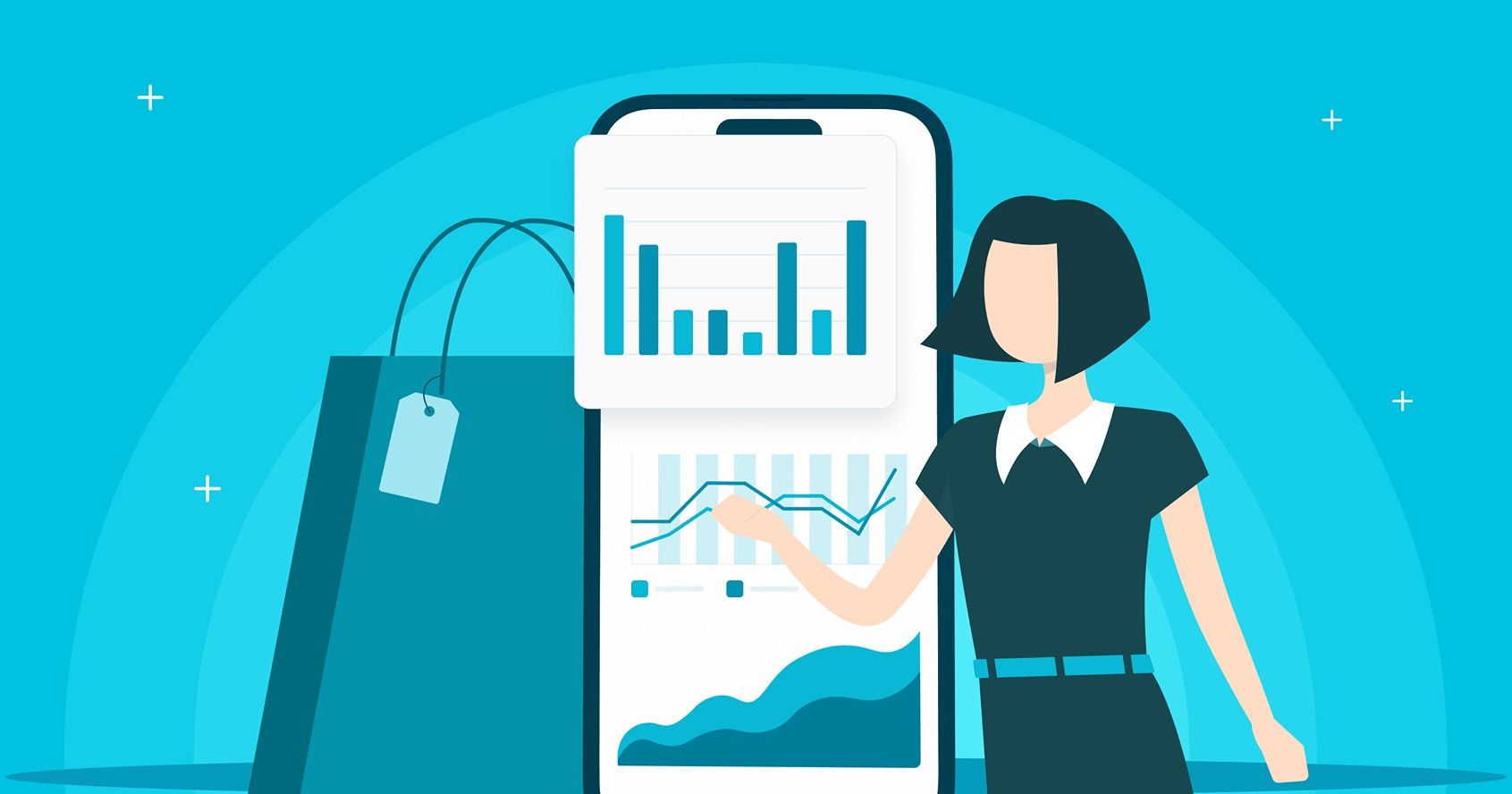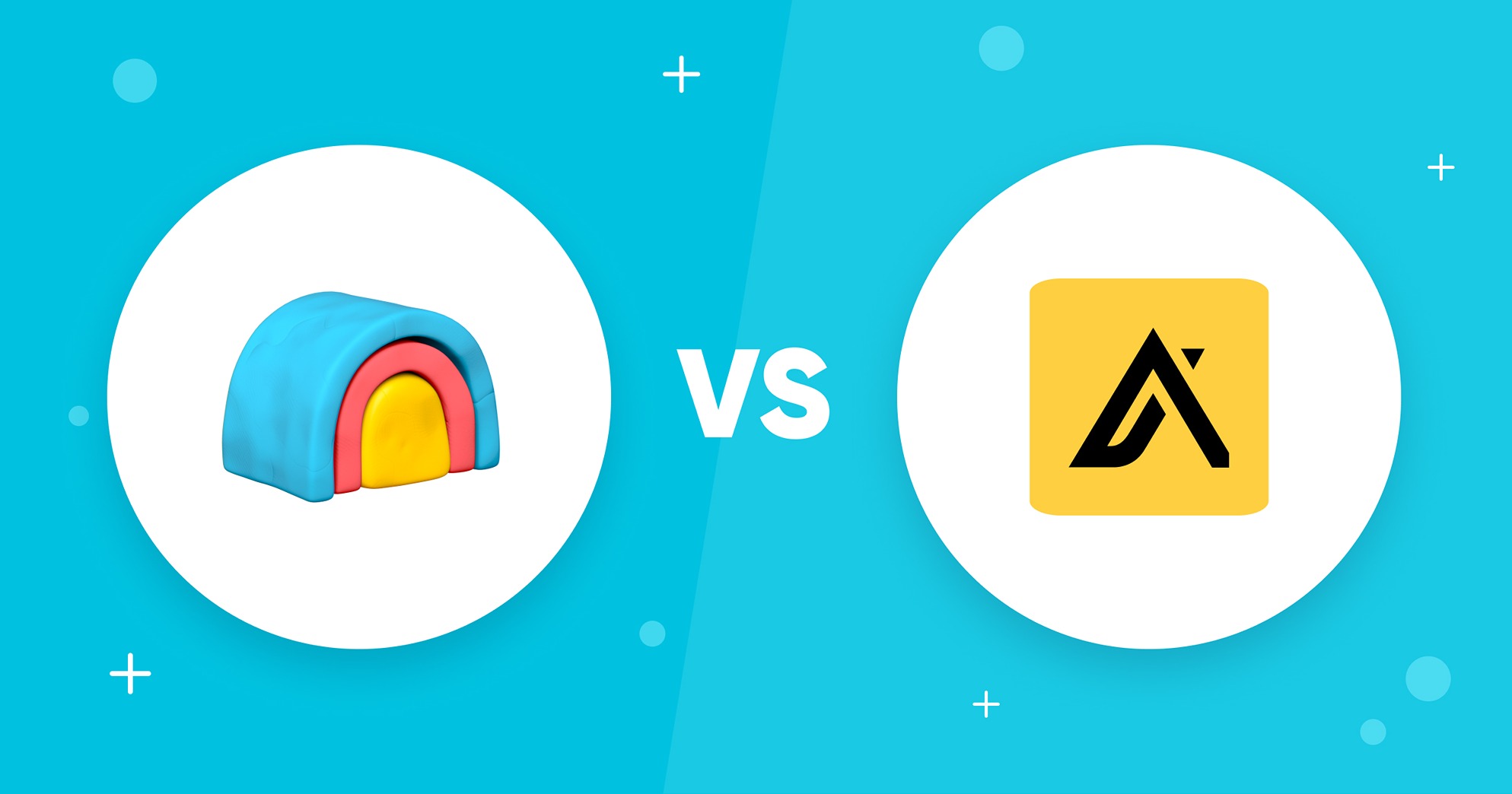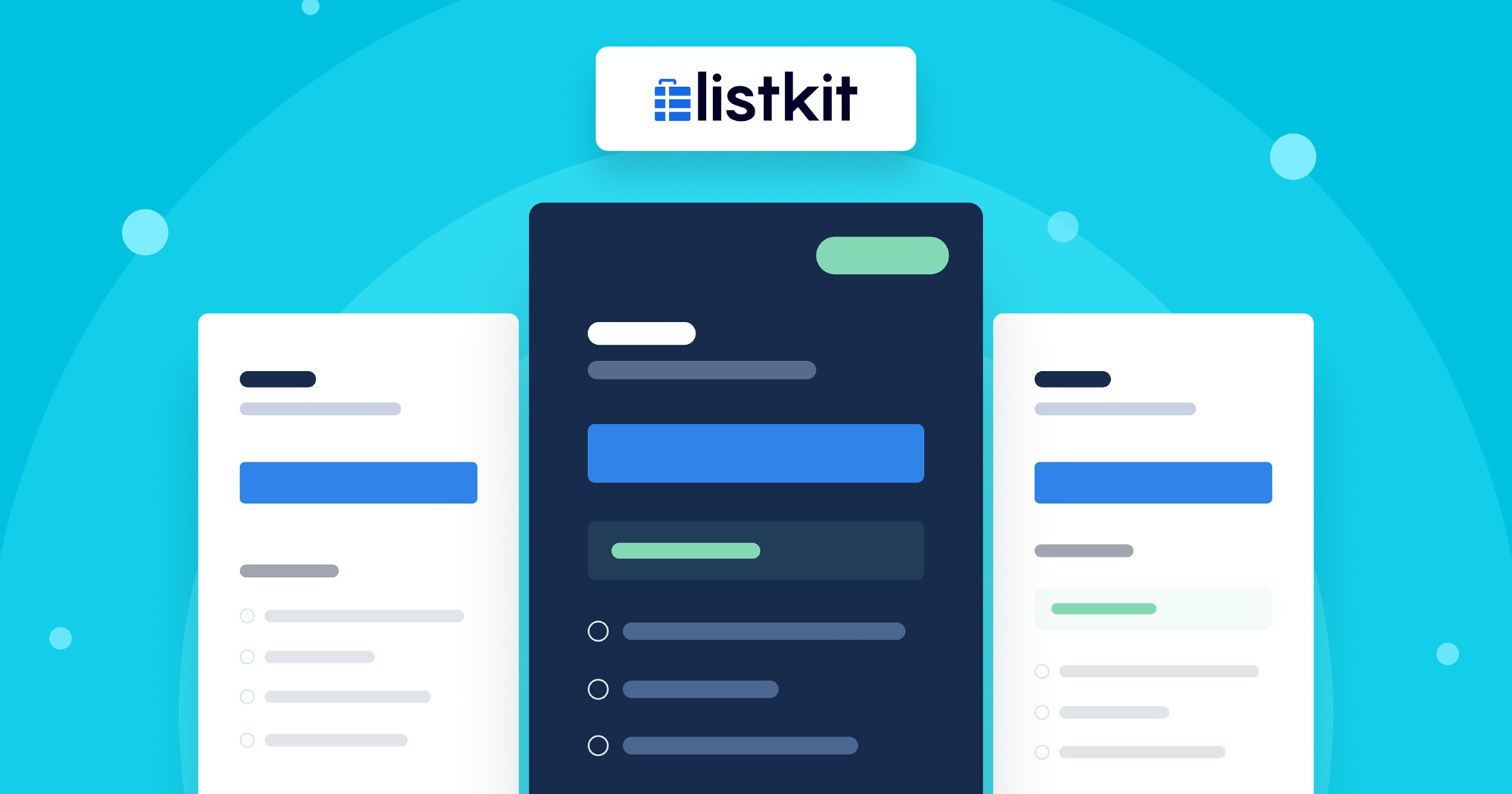According to the SEIA/Wood Mackenzie Power & Renewables U.S. Solar Market Insight report, the solar market is growing massively, with a 40% increase in installations expected from 2023 to 2027, in part due to incentives from the Inflation Reduction Act. As a result, solar leads are more important than ever for companies looking to ride this wave.
This article will cover the basics of solar leads, why you should buy them, and where to find the best providers. Whether you’re new to the game or looking to optimize your strategy the info on lead prices, quality and conversion rates will help you make informed decisions to grow your business.
What Are Solar Leads?
Solar leads are individuals or businesses interested in solar power, looking to discuss solar installations within the thriving solar industry.
Solar companies gather these prospects through various channels, including inbound and outbound marketing strategies like engaging content, ads on Google and YouTube, and even buying leads from trusted sources.
Generating or purchasing solar leads offers a pathway to expand into new markets, manage resources better, and forecast sales more accurately, ultimately making it a cost-effective strategy to grow the business.
Why Should I Purchase Solar Leads?
Buying solar leads gets you into the market faster and helps you execute your sales strategy sooner. You get a pool of pre-qualified people who are looking for solar solutions, so you don’t have to spend time and money on customer research and lead gen.
Choosing the right solar lead generation company is key to the leads being good and trustworthy.
- 🚀 Efficiency: Ready lists of prospects make the sales process faster.
- 📈 Higher Conversion Rates: Pre-qualified leads mean more sales.
- 💰 Cost-effective: Cheaper and better ROI than generating leads in-house.
- 🌍 Market Expansion: Get into new areas or markets faster.
- 📊 Sales Predictability: Leads flow in, so you can forecast and plan.
Buying leads can significantly benefit a solar business by improving sales and fostering valuable partnerships.
Where Can I Buy Solar Leads? (5 Providers Compared)
There are plenty of different providers offering different types of solar leads, catering specifically to the residential solar industry. Here’s a comparison of these services offered by various solar lead generation companies:
UpLead

UpLead is the #1 place to buy solar leads as we connect you with the very best sources. We thoroughly vet and test each solar lead provider.
We start by finding vendors with a good reputation in the industry and move to a pilot testing phase for each provider focusing on lead accuracy and conversion rates.
Afterwards, we analyze the data from the top providers to see how consistent their leads are over time. We’re only accepting providers consistently offering solar leads with a high closing rate.
Only those that pass our strict tests are added to our “secret source” list, so you can get the best solar leads possible. (That’s how UpLead can offer solar leads with confidence.)
If you want the highest quality solar leads that have been vetted for conversion and reliability, contact us now via the live chat to get exclusive access to solar leads from the best vendors.
Types of Solar Leads:
The two main types of solar leads we offer are exclusive and aged:
Exclusive leads are super valuable because they’re sold to only one person, so there’s less competition and more chances of conversion as you have access to a warm potential customer.
Aged leads are older and didn’t convert initially, but are cheap for companies that want to invest time in someone who has already shown interest in solar.
Source of Leads:
Our solar leads come from a combination of referral programs, telemarketing and digital marketing.
RGR Marketing
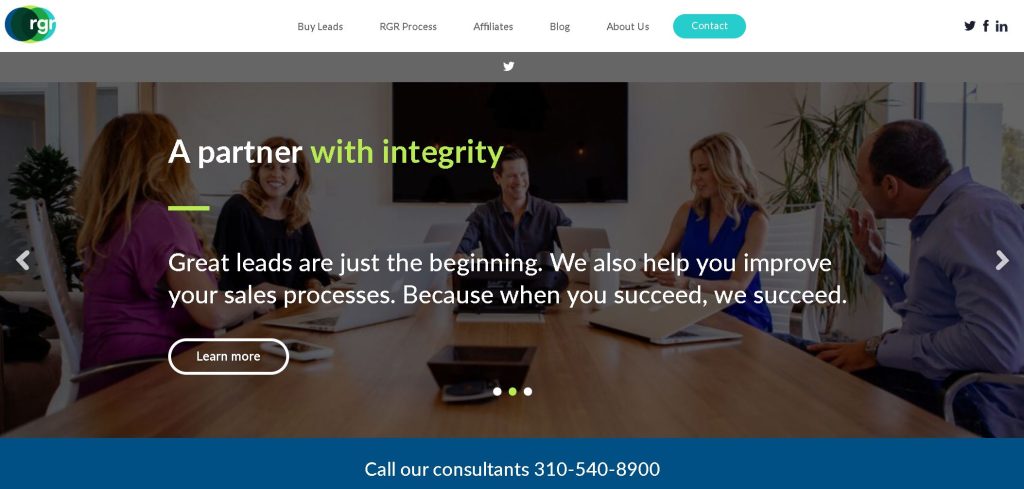
RGR Marketing is an established provider of solar leads, helping businesses connect with homeowners looking for solar solutions.
Types of Solar Leads:
RGR Marketing offers exclusive, high quality solar leads. These leads include full information on the homeowner, contact details, homeowner status and utility provider information which is verified for accuracy.
Source of Leads:
RGR utilizes solar lead generation through targeted digital marketing to homeowners looking for solar energy solutions. They focus on quality and relevance for highest conversion.
33 Mile
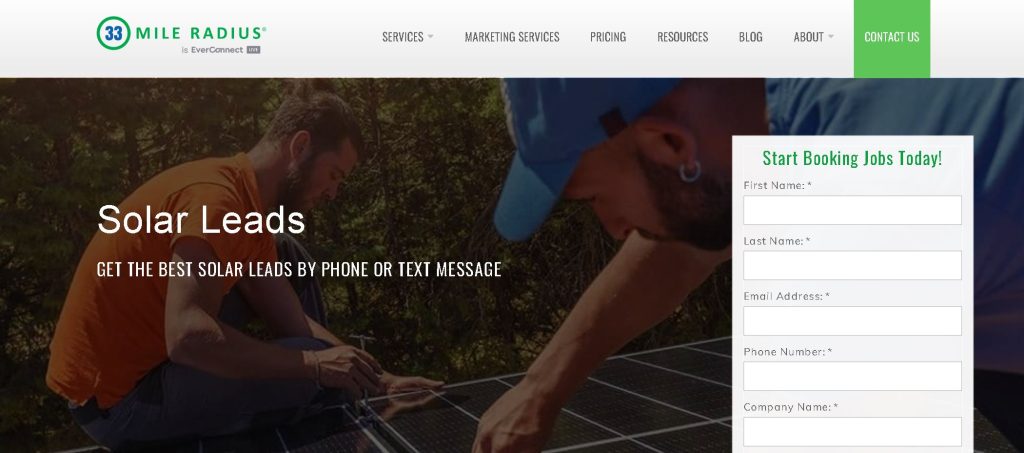
33 Mile Radius generates high quality, exclusive solar leads through digital marketing and direct call routing to contractors. They make sure each lead only goes to one partner so you have the best chance of getting the job.
Types of Solar Leads:
Phone based leads, partners need to respond quickly, validate the lead and set appointments. Since they focus on exclusivity these leads are not shared with other contractors so you have a higher success rate.
Source of Leads:
Leads are generated through various digital marketing strategies, including search engine marketing, to generate leads and ensure visibility to potential customers actively seeking solar solutions.
Leads 2 Trade
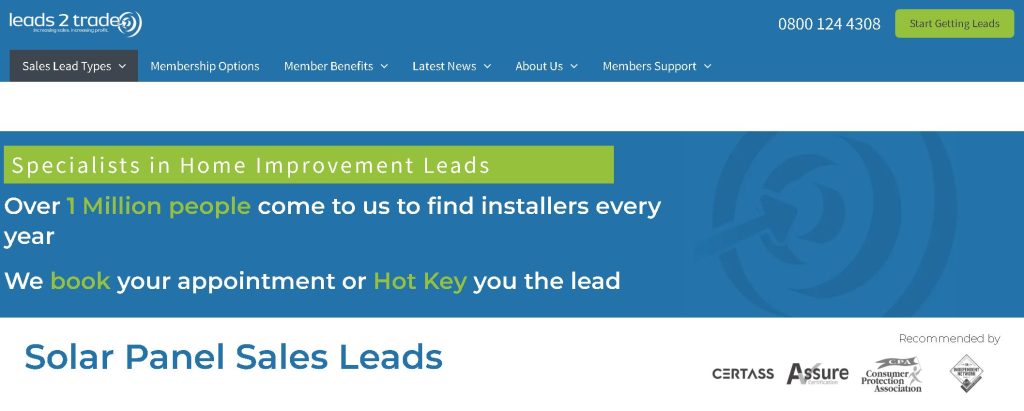
Leads 2 Trade is a UK based company that generates double qualified sales leads for various industries including solar. They deliver high quality, pre-vetted leads to their clients so only interested and relevant customers are targeted.
Types of Solar Leads:
Leads 2 Trade offers what they call “double qualified” solar panels leads. These are vetted twice to ensure quality and relevance, ideal for businesses looking to maximize their sales.
Source of Leads:
Leads are generated through digital marketing and partnerships, online platforms to attract prospects. They target high intent leads, people actively looking for solar. Leads 2 Trade focuses on generating their own leads through methods such as inbound marketing, Google AdWord campaigns, content creation, and paid search.
Aged Lead Store
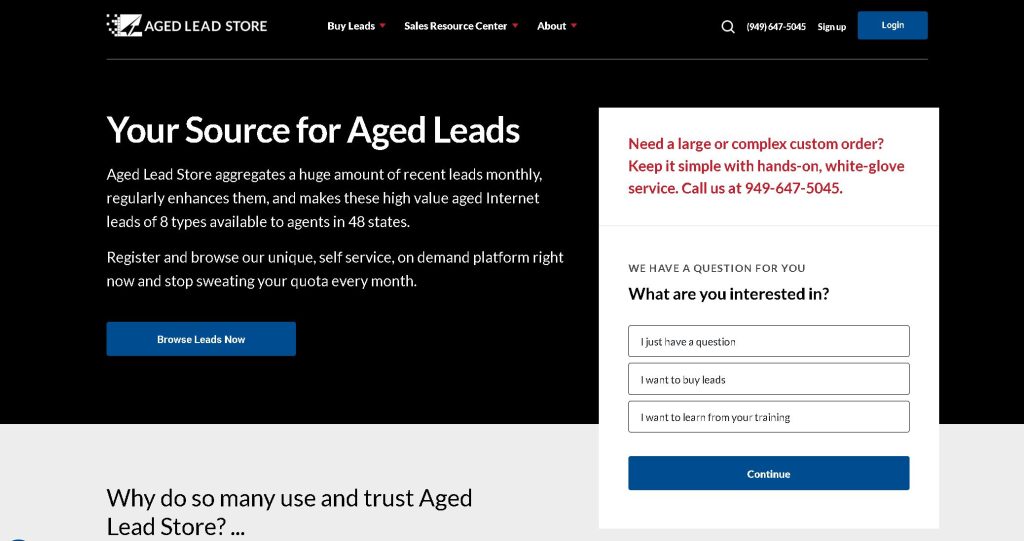
Aged Lead Store provides aged leads for various industries including solar installation. A cost effective alternative to fresh leads by selling information on customers who have shown interest but haven’t bought yet.
Types of Solar Leads:
Aged Lead Store offers aged solar leads, categorized by how long ago the lead was generated and their interest in installing solar panels. They offer three main types:
- Solar installation leads: aged 30 to 85 days.
- Solar installation leads: aged 86 to 365 days.
- Solar installation leads: aged 366 to 2000 days (only with landline contact information).
Source of Leads:
Leads are generated from initial marketing efforts like online ads, TV commercials and other campaigns that didn’t result in immediate sales. Then aged and sold at a discount.
Qualified Solar Leads
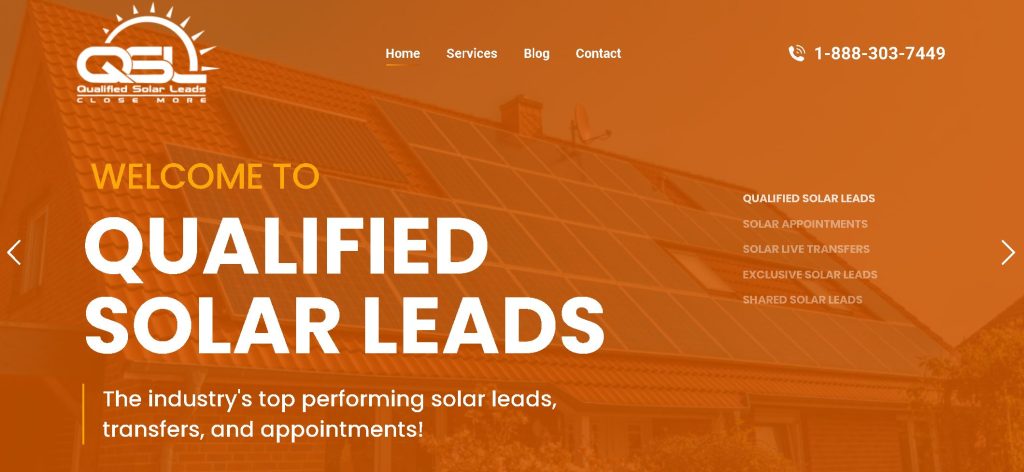
Qualified Solar Leads provides high quality solar appointments, aged solar leads and live transfers. THey serve solar companies looking to scale their operations and increase sales efficiency, with almost a decade of industry experience.
Types of Solar Leads:
- Exclusive Solar Leads: Not shared with other installers, one buyer per lead.
- Shared Solar Leads: Shared among a few installers, balance of exclusivity and cost.
- Aged Solar Leads: Older leads at a discounted rate, for call center operations.
- Solar Live Transfers: Real time leads transferred to your sales team after initial qualification.
- Opt-In Solar Leads: Leads from people who have expressed interest in learning more about solar.
Source of Leads:
Qualified Solar Leads generates leads through in-house and top-tier publishers. They have a multi-step process of initial inquiries through various advertising methods followed by a detailed qualification process to ensure lead quality.
What Types of Solar Leads Can I Purchase?
You can purchase different types of solar leads, such as exclusive or shared leads, or real-time or aged leads. Here’s a comprehensive list of solar leads types based on different criteria:
Age
- Real-time or Fresh Leads: Generated from direct marketing activities such as online ads, TV commercials, radio spots, and social media. These leads are captured when a potential customer expresses interest immediately after seeing the ad or promotional material. They are the most expensive because they are the most likely to convert and are fresh.
- Aged Leads: From the same sources as real-time leads but not purchased immediately. Over time the leads that haven’t converted are sold at a lower price. These can be a few days old to over a year old and are a more affordable option for campaigns that don’t need to convert immediately.
Lead Qualification Level
- Qualified Leads: These are leads that have been pre-verified to make sure the potential customer meets certain criteria such as credit score, homeownership and interest in solar. This category has higher conversion rates because the prospects have already shown significant interest or intent to buy solar installations.
- Non-Qualified Leads: Leads that haven’t been screened for specific qualifications. They are cheaper but require more work to convert because they might not meet all the sales criteria for solar installation eligibility.
Interaction Type
- Solar Live Transfer Leads: Leads where a call center contacts a potential customer and once the customer shows interest, transfers the call to a sales rep. This means the lead is hot and interested and has a high chance of conversion.
- Solar Appointments: Pre-scheduled appointments where the prospect has agreed to discuss solar in detail. This lead type usually comes from higher engagement methods like live transfers or direct calls.
- Appointment-setting Calls: Leads generated from outbound calls where the goal is to set an appointment rather than sell directly. These are usually part of a telemarketing effort to filter and schedule interested customers for detailed consultations.
Lead Generation Method
- Canvassing Leads: Generated from door-to-door marketing. Teams visit potential customers in person to talk about solar energy, creating immediate engagement and high conversion in the right demographics.
- Opt-in Web Leads: These leads come from online forms filled out by potential customers who voluntarily give their contact information in exchange for more information about solar solutions. This method has a higher conversion rate because the leads have shown active interest.
- Organic Solar Leads: Generated from SEO where potential customers find the solar provider through organic search engine results. These leads are valuable because they are driven by the customer’s own research and interest.
- PPC Leads (Pay-Per-Click): Generated from paid advertising like Google Ads where potential customers click on ads and are directed to a landing page to fill out their information. This method can generate a high volume of leads quickly but at a higher cost.
Cost and Accessibility
- Exclusive Leads: Exclusive leads are sold to only one buyer, no competition and higher conversion rate but at a higher cost.
- Shared Leads: Shared leads are sold to multiple buyers and are cheaper but more competition.
Each of these types of solar leads has its pros and cons. Choose the lead type that fits your sales strategy, budget, market and goals of your solar installation business. Mixing different types of leads can optimize your sales funnel and increase overall conversion rate.
| Name | Cost Level | Conversion Rate | Readiness |
| Real-time/Fresh Leads | High | High | Immediate |
| Aged Leads | Low | Moderate | Delayed |
| Exclusive Leads | High | High | Immediate |
| Shared Leads | Moderate | Low | Immediate |
| Canvassing Leads | Moderate | High | Immediate |
| Opt-in Web Leads | Moderate | High | Immediate |
| Organic Solar Leads | Low | High | Immediate |
| PPC Leads | High | Moderate | Immediate |
| Solar Live Transfer Leads | Very High | Very High | Immediate |
| Solar Appointments | High | Very High | Scheduled |
| Appointment-setting Calls | Moderate | Moderate | Scheduled |
Criteria:
- Cost: Average cost to get these leads. High cost means more expensive leads generally because of immediate conversion or exclusivity.
- Conversion Rate: Typical conversion rate of the lead to customer. High conversion rates are for leads that show purchase intent or are pre-qualified.
- Readiness: How quickly will the lead convert. ‘Immediate’ means the lead is in decision mode, ‘Delayed’ means the lead needs further nurturing.
Use this table to decide which lead type fits your budget, conversion urgency and goals. Each lead type has a place in a solar marketing strategy, cost vs return.
How Much Do Solar Leads Cost?
Solar leads cost between $0.25 and $300. Several factors determine this cost, including the quality of the lead, the source from which it was obtained, and the current market demand and competition. Exclusive leads in competitive markets like San Diego can be $300, while aged leads can cost as little as $0.25. The upfront cost of solar panels also plays a role as potential customers may be scared off by the initial investment.
Factors Affecting Solar Lead Costs:
- Lead Quality: Prices differ greatly depending on whether leads are real-time, exclusive, shared, live call transfers or preset appointments.
- Source of Leads: Organic leads from Google and Facebook may cost differently than telemarketing leads.
- Geographical Location: Hot solar markets with competition will drive up prices due to demand.
- Market Demand and Competition: More solar companies means higher prices.
- Lead Sharing: Shared leads are cheaper but more competitive, exclusive leads are more expensive but more valuable.
How can I calculate how much I can spend per solar lead?
To figure out how much you can spend per solar lead, you need to consider a few key financial metrics to make sure your lead spending aligns with your business goals and profitability. Here’s how:
1. Determine Your Average Sale Price (ASP): This is the average revenue you make from each installation or sale. Knowing this will give you a baseline for how much revenue you can expect from each converted lead.
2. Calculate Your Lead Conversion Rate: This is the percentage of leads that convert into sales. For example, if you buy 100 leads and convert 5 of them, your conversion rate is 5%.
3. Know Your Target Profit Margin: Decide what net margin you want to make on each sale after all costs (including lead costs) are factored in.
4. Set Your Maximum Cost Per Acquisition (CPA): This is the maximum you can spend to acquire a customer through a lead and still hit your profit margin goal. It’s calculated based on your ASP and target profit margin. For example, if your ASP is $10,000 and your target profit margin is 20%, your maximum CPA would be:

So,

5. Calculate Maximum Cost Per Lead (CPL): Finally, to figure out how much you can spend on each lead, use your maximum CPA and lead conversion rate:

If your conversion rate is 5% (0.05 as a decimal), then:

So you can spend up to $400 per lead.
Use this formula to spend on leads based on real financial goals and actual sales data. Review these metrics as your business and the market changes to stay competitive and profitable. Adjust your CPL as ASP, conversion rates and target margins change to keep your acquisition strategy sustainable.
What Does a Solar Lead Look Like?
A solar lead looks like a detailed profile consisting of contact information and individual interest in solar energy solutions. Here’s a sample:
- Name:
- John Doe
- Contact Info:
- Phone: +1 234 567 8900
- Email: [email protected]
- Address:
- 123 Sunshine Blvd, Solar City, CA 90210, USA
- Interested in:
- Full rooftop solar installation.
- Wants info on government rebates and tax credits for solar.
- Demographics:
- 45 years old
- $100,000 income
- Single family home owner, 2,000 sq ft.
- Source:
- Contact form on Google Ads landing page.
- Engagement:
- Downloaded “Understanding Solar Energy Savings” guide.
- Attended free webinar on home solar last month.
- Best Time to Contact:
- Weeknights 6:00-8:00 PM.
- Conversion Potential:
- High. Looking for quotes and has the budget to move forward.
What Legal Considerations Should I Be Aware of When Buying Solar Leads?
When buying solar leads, you should be aware of key legal considerations to ensure compliance and ethical practices.
Telephone Consumer Protection Act (TCPA) Compliance
The TCPA governs how companies can contact potential customers via phone and text. A big one to note is the need for explicit consent from consumers before contacting them. This includes getting clear permission for each specific marketing partner who will also be contacting the lead. TCPA violations can result in big fines, as seen in past lawsuits where companies settled for millions.
Disclosure of Marketing Partners
Lead gen companies need to transparently list all marketing partners when getting consent from leads. This way consumers are fully aware of who will be contacting them and for what.
Quality of Leads
Buying high quality leads that are relevant to your target market is key. Low quality leads or leads generated through shady means can waste resources and harm your business.
Lead Sharing
Know if the leads you buy are exclusive or shared with other companies. Exclusive leads are more expensive but have higher conversion potential since no other competitor has access to them.
Legal Risks with Offshore Call Centers
Using offshore call centers for lead gen can be cheap but comes with higher risk of TCPA violations if the call centers don’t comply with US laws.
Work with lead gen companies and follow the rules when buying and using solar leads. That way you’ll be safe from legal headaches and boost lead conversion and customer trust.
How Can I Generate My Own Solar Leads?
To generate leads for your own solar business, find your target market, tailor your message, use local directories and social media, SMS and email marketing, and community events. Here’s how:
- Find your target market: Are your ideal customers homeowners or businesses? What are their demographics, age, and energy spending habits? This will help you tailor your outreach.
- Tailor your message: Differentiate your message for residential vs commercial prospects. What benefits will resonate with each group? Cost savings for homeowners and environmental impact for businesses.
- Use local service directories: Get listed on Yelp and EnergySage so customers who are searching for solar solutions can find you. This increases your visibility to the right audience.
- Use social media: Engage with leads by sharing different content on Facebook and Instagram. Use hashtags to be more discoverable and reach your target market better.
- Run SMS and email marketing campaigns: Build a subscriber list and keep potential customers informed with updates, offers, and useful info. Personalized messages will boost engagement rates.
- Attend community events and trade shows: These are great opportunities to meet potential customers in person. Use promo materials and run contests to get attention and capture contact details.
By following these steps, you can effectively generate solar leads and grow your business in the competitive solar market.
FAQ: Buying Solar Leads
Conversion rates can vary depending on the quality of the leads and how you manage them. A good conversion rate for solar leads to appointments is 30-35% and to sales is 6-15%
Yes, you can get solar leads without buying them. Optimize your website for SEO, do social media marketing and offer incentives for referrals to get directly in front of people looking for solar solutions.
Yes, you can target commercial properties for solar leads. Commercial clients are more focused on cost and deal with bigger budgets and on a bigger scale. This results in a more complex sales cycle. To tap into this market online advertising, SEO and leveraging success stories are key.
Yes, there are tools to purchase solar leads, including lead generation platforms and software designed specifically for acquiring solar power leads.
No, solar power leads do not guarantee sales due to various uncertainties and factors influencing the buying process.For example, buying solar panels is a long decision making process where buyers research extensively. Additionally, factors such as the age and lead quality, and whether they are pre-qualified, significantly impact conversion rates.

